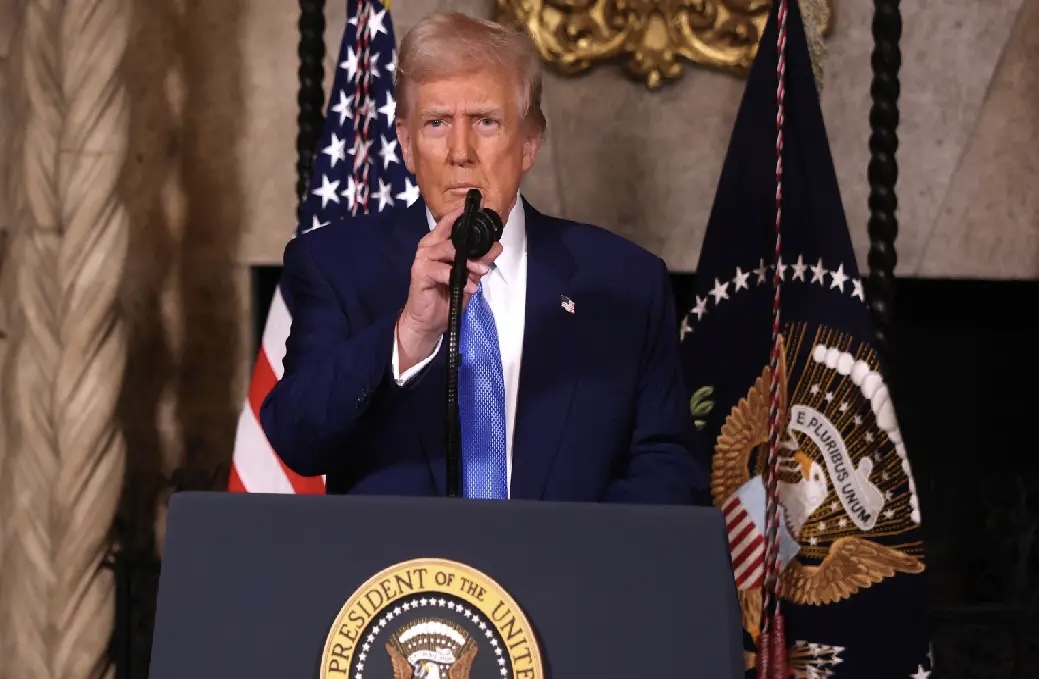Trump Announces Unprecedented Fort Knox Review – “First in 82 Years”
In a bold and unexpected move this weekend, President Donald Trump announced via social media that he would personally oversee an inspection of Fort Knox, the renowned U.S. Bullion Depository, to confirm that the nation’s gold reserves are secure. Sharing a video on X (formerly Twitter), Trump stated, “We’re gonna go into Fort Knox to make sure the gold is there,” drawing significant attention and sparking widespread speculation. This decision is historic, as it marks the first time in 82 years that individuals outside of the usual circle of authorized personnel will be permitted to examine the vaults of Fort Knox. The last similar event occurred in 1943 when President Franklin D. Roosevelt visited the facility.
Fort Knox has long been regarded as a symbol of American financial strength and national security. As one of the most heavily protected sites in the world, its reputation for secrecy and robust security measures has only fueled the mystique surrounding it. Trump’s announcement signals a push for greater transparency and accountability in how the nation’s most critical assets are managed. By overseeing the inspection himself, he aims to ensure that the public can have confidence in the integrity of the country’s gold reserves.
During a speech to Republican governors, Trump reaffirmed his commitment to overseeing the inspection, emphasizing that it would serve as a final check to verify the condition of the gold. “We’re going to open up the doors. We’re going to inspect Fort Knox,” he explained, later adding, “If the gold isn’t there, we’re gonna be very upset.” This direct statement highlights his firm stance on protecting the nation’s wealth and assuring the public that no secrets or mismanagement will go unchecked.
Located about 35 miles south of Louisville, Kentucky, Fort Knox spans more than 109,000 acres. Since its establishment in 1937, it has housed the United States’ gold reserves, which are estimated to be around 147.3 million ounces, valued at over $430 billion. The facility is legendary not only for the sheer volume of gold it stores but also for its formidable security measures. The vault was constructed using a massive amount of reinforced materials, including granite, concrete, and steel, to create an impenetrable structure. As a result, access has been tightly controlled, with public access being an exceedingly rare event.
In fact, the only times Fort Knox has been opened to the public were in 1974, when a select group of journalists and lawmakers toured the site amid rumors about missing gold, and in 2017, when Treasury Secretary Steve Mnuchin and a few others conducted an inspection. These events only served to enhance the intrigue surrounding the facility, reinforcing its image as a nearly inaccessible fortress.
Trump’s planned inspection is not just a logistical feat but a politically charged gesture. Fort Knox has long been a symbol of financial stability, and by proposing to inspect it, Trump challenges decades of tradition surrounding secrecy at the site. Supporters view this as a much-needed move toward transparency, with the potential to bolster public trust in how the government manages national assets. For them, the inspection is an important step in ensuring the proper handling of America’s wealth, and a chance to dispel doubts about the integrity of the gold reserves.
However, critics argue that the timing and motivations behind the inspection may be more about generating media attention than addressing any real concerns about Fort Knox’s security. Some fear that such an inspection could compromise the facility’s security, especially if not handled with extreme caution. While these concerns are valid, the announcement has undeniably sparked renewed conversation about government transparency, particularly regarding how vital national assets are protected.
Despite the buzz surrounding Trump’s declaration, many specifics about the inspection are still unknown. Fort Knox has historically maintained a strict “no visitors” policy, and the United States Mint, which oversees the facility, has always been tight-lipped about its operations. Nevertheless, Treasury Secretary Scott Bessent has indicated a willingness to arrange tours for select senators, showing a willingness to accommodate oversight while preserving security.
The inspection also serves as a powerful symbol of Trump’s broader push for transparency in government, especially in the wake of increasing calls for more open operations within federal agencies. If this inspection is successful and demonstrates that even the most secure facilities can undergo public scrutiny without compromising national security, it could set a precedent for similar transparency efforts in other areas of governance.
Fort Knox, which originated as a military installation during World War I and later became the U.S. Bullion Depository in 1937, has always been a symbol of national strength and security. Its vaults are designed to withstand any potential threat, and the construction materials used ensure that it remains one of the most secure locations in the world.
The planned inspection will also stand as an important historical milestone. The last time a public inspection took place was in 1943 during President Roosevelt’s administration. Since then, access to the facility has been rare and highly controlled. Trump’s announcement promises to break with tradition, offering a level of public access not seen in over eight decades. This new approach could alter the way the public views Fort Knox and its role in safeguarding the nation’s wealth.
Ultimately, Trump’s Fort Knox inspection is not just about verifying the status of the nation’s gold reserves; it is a statement about government openness and accountability. As the details unfold, the inspection has the potential to reshape the conversation around national security, financial management, and the role of transparency in the stewardship of American resources. Whether this inspection leads to meaningful changes or becomes a symbolic gesture, its impact on the future of government oversight is certain to be significant.
